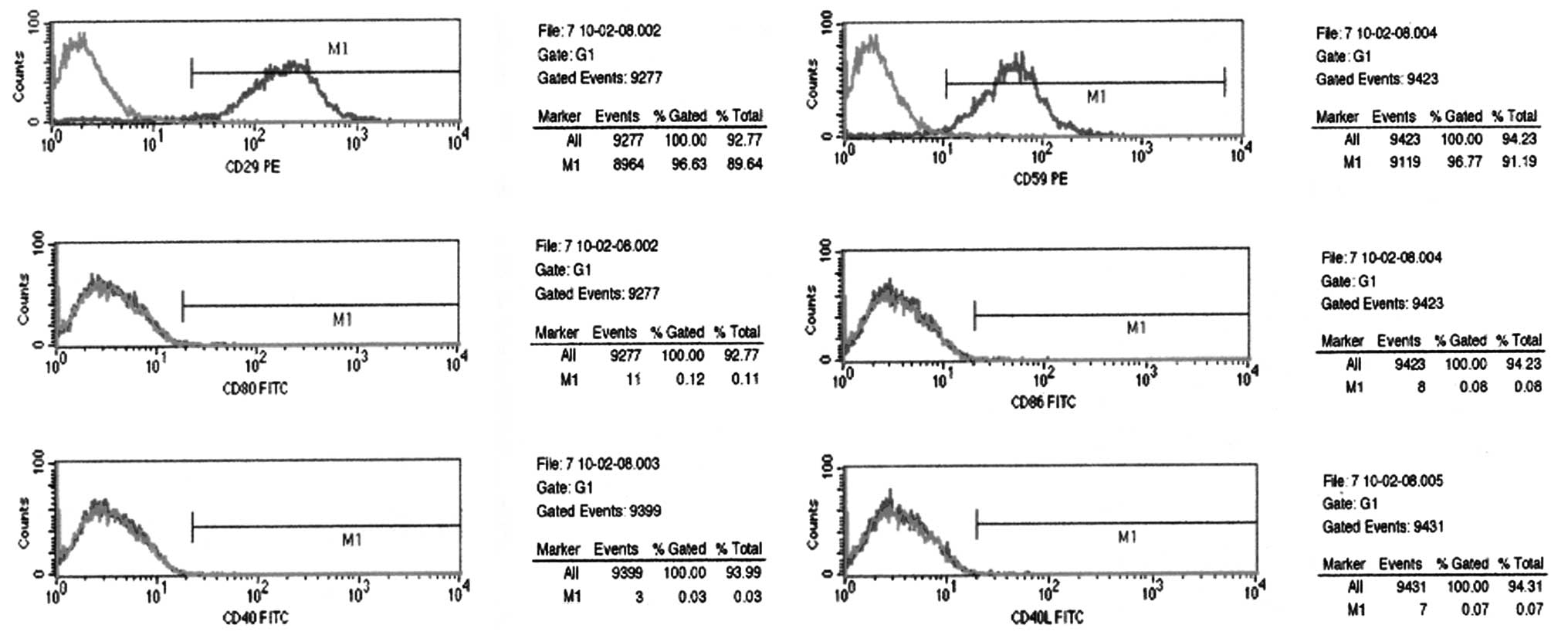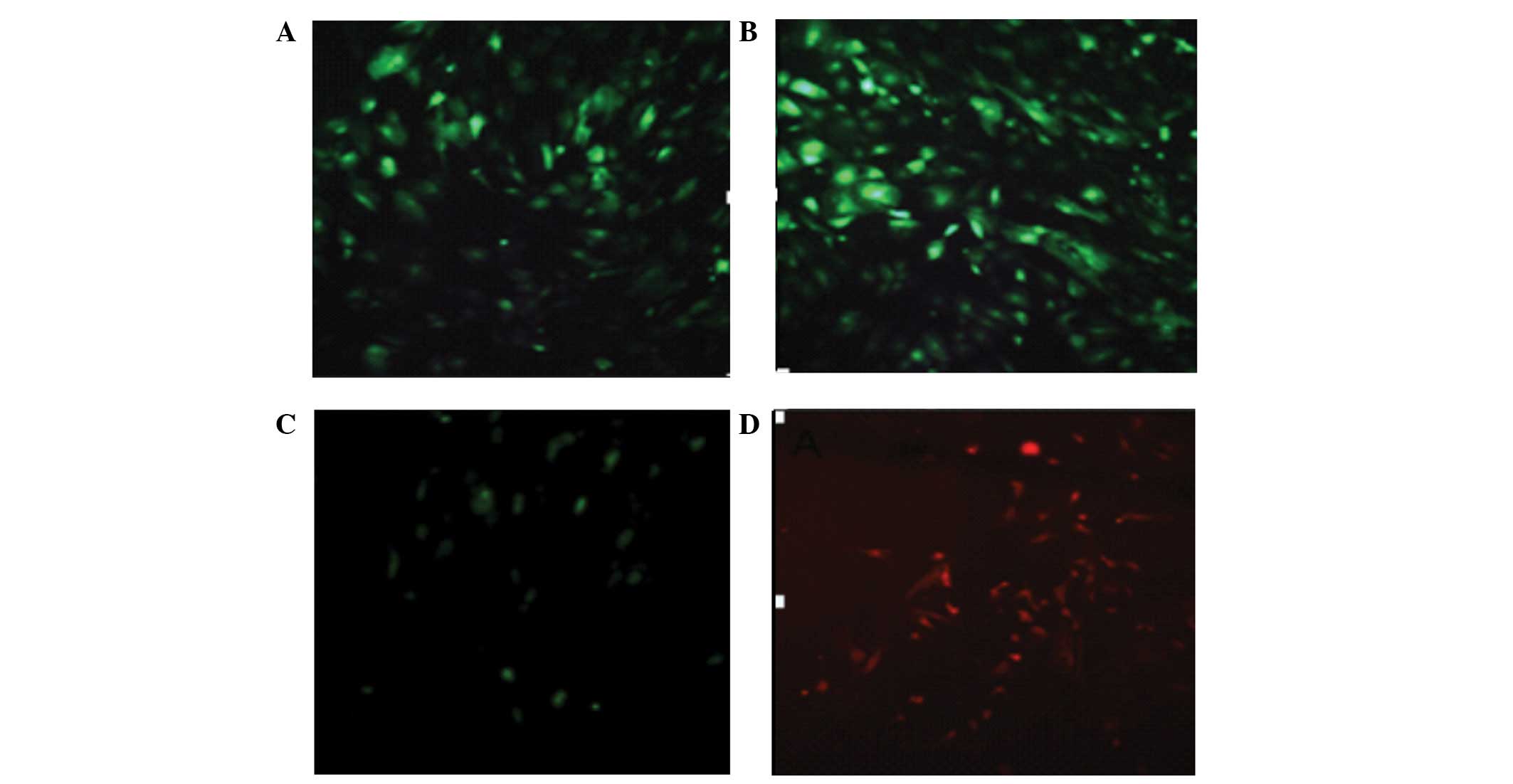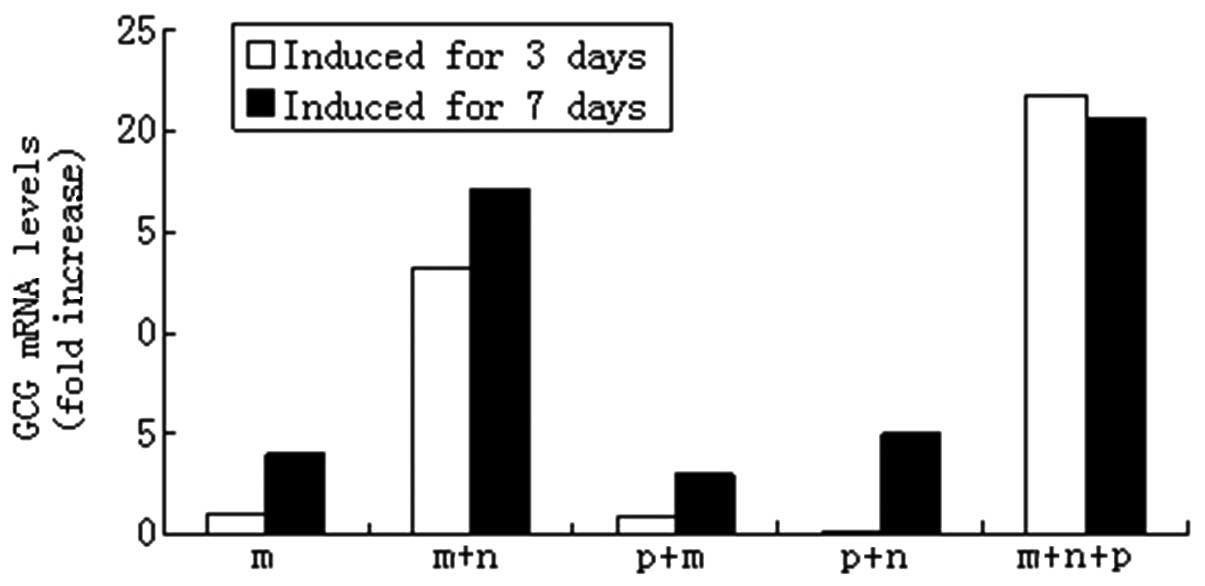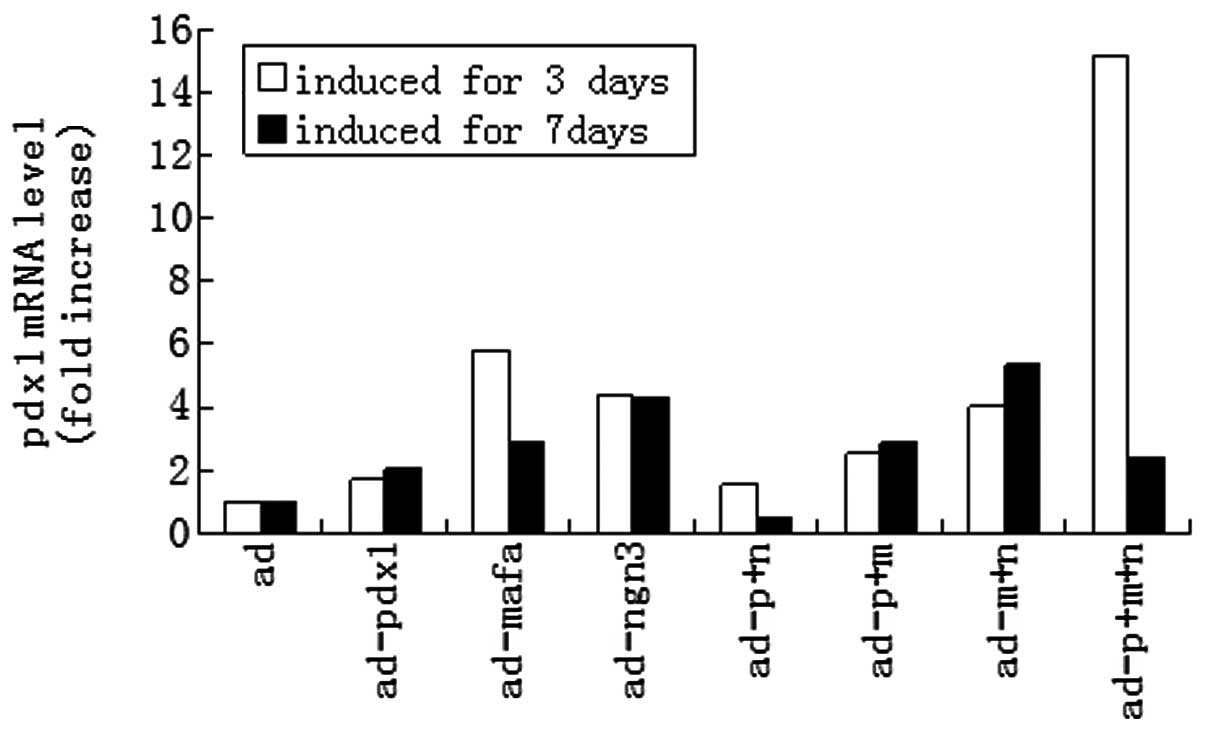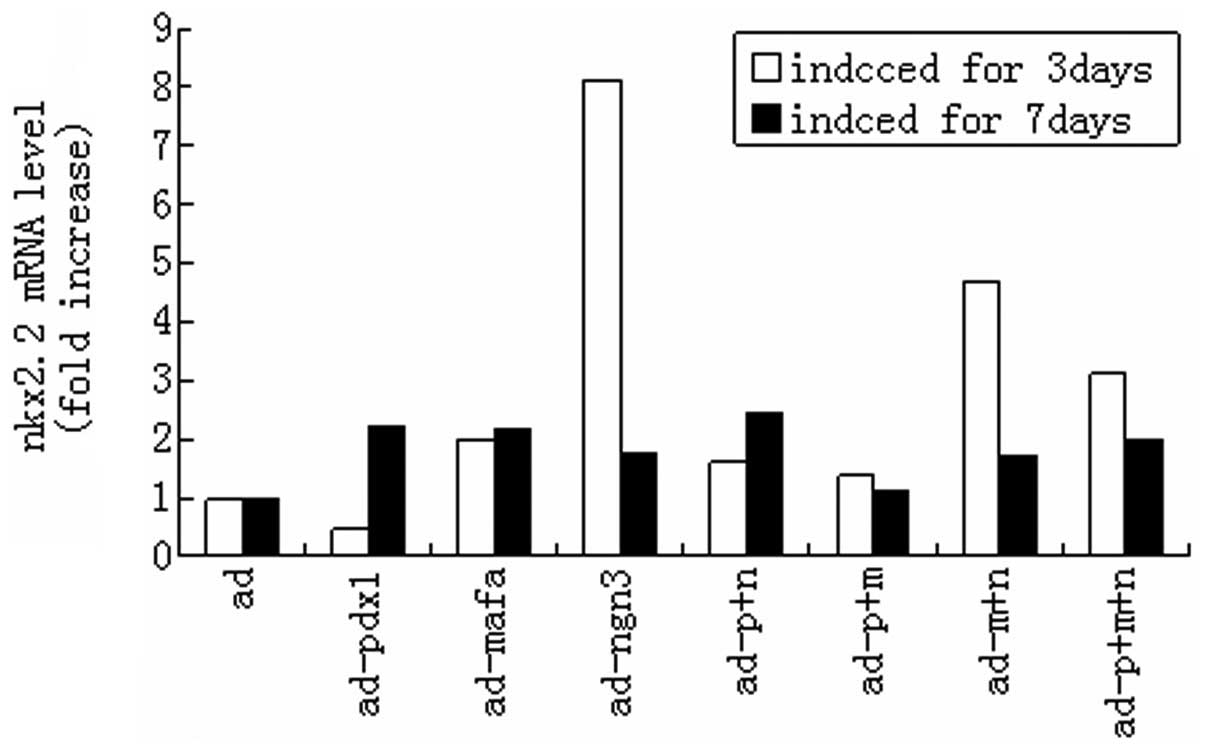|
1
|
Weiss ML, Medicetty S, Bledsoe AR, et al:
Human umbilical cord matrix stem cells: preliminary
characterization and effect of transplantation in a rodent model of
Parkinson’s disease. Stem Cells. 24:781–792. 2006.PubMed/NCBI
|
|
2
|
Wang HS, Hung SC, Peng ST, et al:
Mesenchymal stem cells in the Wharton’s jelly of the human
umbilical cord. Stem Cells. 22:1330–1337. 2004.
|
|
3
|
Matsushita T, Elliger S, Elliger C, et al:
Adeno-associated virus vectors can be efficiently produced without
helper virus. Gene Ther. 5:938–945. 1998. View Article : Google Scholar : PubMed/NCBI
|
|
4
|
McMahon JM, Conroy S, Lyons M, et al: Gene
transfer into rat mesenchymal stem cells: a comparative study of
viral and nonviral vectors. Stem Cells Dev. 15:87–96. 2006.
View Article : Google Scholar : PubMed/NCBI
|
|
5
|
MacKenzie KL, Hackett NR, Crystal RG and
Moore MA: Adenoviral vector-mediated gene transfer to primitive
human hematopoietic progenitor cells: assessment of transduction
and toxicity in long-term culture. Blood. 96:100–108.
2000.PubMed/NCBI
|
|
6
|
Brokhman I, Pomp O, Fishman L, et al:
Genetic modification of human embryonic stem cells with adenoviral
vectors: differences of infectability between lines and correlation
of infectability with expression of the coxsackie and adenovirus
receptor. Stem Cells Dev. 18:447–456. 2009. View Article : Google Scholar
|
|
7
|
Heremans Y, Van De Casteele M, in’t Veld
P, et al: Recapitulation of embryonic neuroendocrine
differentiation in adult human pancreatic duct cells expressing
neurogenin 3. J Cell Biol. 159:303–312. 2002. View Article : Google Scholar
|
|
8
|
Karnieli O, Izhar-Prato Y, Bulvik S and
Efrat S: Generation of insulin-producing cells from human bone
marrow mesenchymal stem cells by genetic manipulation. Stem Cells.
25:2837–2844. 2007. View Article : Google Scholar : PubMed/NCBI
|
|
9
|
Soyer J, Flasse L, Raffelsberger W, et al:
Rfx6 is an Ngn3-dependent winged helix transcription factor
required for pancreatic islet cell development. Development.
137:203–212. 2010. View Article : Google Scholar : PubMed/NCBI
|
|
10
|
Zhou Q, Brown J, Kanarek A, et al: In vivo
reprogramming of adult pancreatic exocrine cells to beta-cells.
Nature. 455:627–632. 2008. View Article : Google Scholar : PubMed/NCBI
|
|
11
|
Guz Y, Montminy MR, Stein R, et al:
Expression of murine STF-1, a putative insulin gene transcription
factor, in beta cells of pancreas, duodenal epithelium and
pancreatic exocrine and endocrine progenitors during ontogeny.
Development. 121:11–18. 1995.
|
|
12
|
Sharma A, Fusco-DeMane D, Henderson E, et
al: The role of the insulin control element and RIPE3b1 activators
in glucose-stimulated transcription of the insulin gene. Mol
Endocrinol. 9:1468–1476. 1995.PubMed/NCBI
|
|
13
|
Wilson LM, Wong SH, Yu N, et al: Insulin
but not glucagon gene is silenced in human pancreas-derived
mesenchymal stem cells. Stem Cells. 27:2703–2711. 2009. View Article : Google Scholar : PubMed/NCBI
|
|
14
|
Kawasaki H, Mizuguchi T, Oshima H, et al:
Efficient transformation of small hepatocytes into
insulin-expressing cells by forced expression of Pdx1. J
Hepatobiliary Pancreat Surg. 15:403–409. 2008. View Article : Google Scholar : PubMed/NCBI
|
|
15
|
Ma L, Feng XY, Cui BL, et al: Human
umbilical cord Wharton’s Jelly-derived mesenchymal stem cells
differentiation in to nerve-like cells. Chinese Med J (Engl).
118:1987–1993. 2005.
|
|
16
|
Matsuoka TA, Kaneto H, Stein R, et al:
MafA regulates expression of genes important to islet beta-cell
function. Mol Endocrinol. 21:2764–2774. 2007. View Article : Google Scholar : PubMed/NCBI
|
|
17
|
Artner I, Le Lay J, Hang Y, et al: MafB:
an activator of the glucagon gene expressed in developing islet
alpha- and beta-cells. Diabetes. 55:297–304. 2006. View Article : Google Scholar : PubMed/NCBI
|
|
18
|
Otonkoski T, Beattie GM, Mally MI, et al:
Nicotinamide is a potent inducer of endocrine differentiation in
cultured human fetal pancreatic cells. J Clin Invest. 92:1459–1466.
1993. View Article : Google Scholar : PubMed/NCBI
|
|
19
|
Ohgawara H, Kawamura M, Honda M, et al:
Reversal of glucose insensitivity of pancreatic B-cells due to
prolonged exposure to high glucose in culture: effect of
nicotinamide on pancreatic B-cells. Tohoku J Exp Med. 169:159–166.
1993. View Article : Google Scholar : PubMed/NCBI
|
|
20
|
Zhang D, Jiang W, Liu M, et al: Highly
efficient differentiation of human ES cells and iPS cells into
mature pancreatic insulin-producing cells. Cell Res. 19:429–438.
2009. View Article : Google Scholar : PubMed/NCBI
|
|
21
|
Sussel L, Kalamaras J, Hartigan-O’Connor
DJ, et al: Mice lacking the homeodomain transcription factor Nkx2.2
have diabetes due to arrested differentiation of pancreatic beta
cells. Development. 125:2213–2221. 1998.PubMed/NCBI
|
|
22
|
Matsuoka TA, Zhao L, Artner I, et al:
Members of the large Maf transcription family regulate insulin gene
transcription in islet beta cells. Mol Cell Biol. 23:6049–6062.
2003. View Article : Google Scholar : PubMed/NCBI
|
|
23
|
Weiss ML, Anderson C, Medicetty S, et al:
Immune properties of human umbilical cord Wharton’s jelly-derived
cells. Stem Cells. 26:2865–2874. 2008.
|
|
24
|
Ritz-Laser B, Gauthier BR, Estreicher A,
et al: Ectopic expression of the beta-cell specific transcription
factor Pdx1 inhibits glucagon gene transcription. Diabetologia.
46:810–821. 2003. View Article : Google Scholar : PubMed/NCBI
|
|
25
|
Wang H, Maechler P, Ritz-Laser B, et al:
Pdx1 level defines pancreatic gene expression pattern and cell
lineage differentiation. J Biol Chem. 276:25279–25286. 2001.
View Article : Google Scholar : PubMed/NCBI
|
|
26
|
Watada H, Scheel DW, Leung J and German
MS: Distinct gene expression programs function in progenitor and
mature islet cells. J Biol Chem. 278:17130–17140. 2003. View Article : Google Scholar : PubMed/NCBI
|




